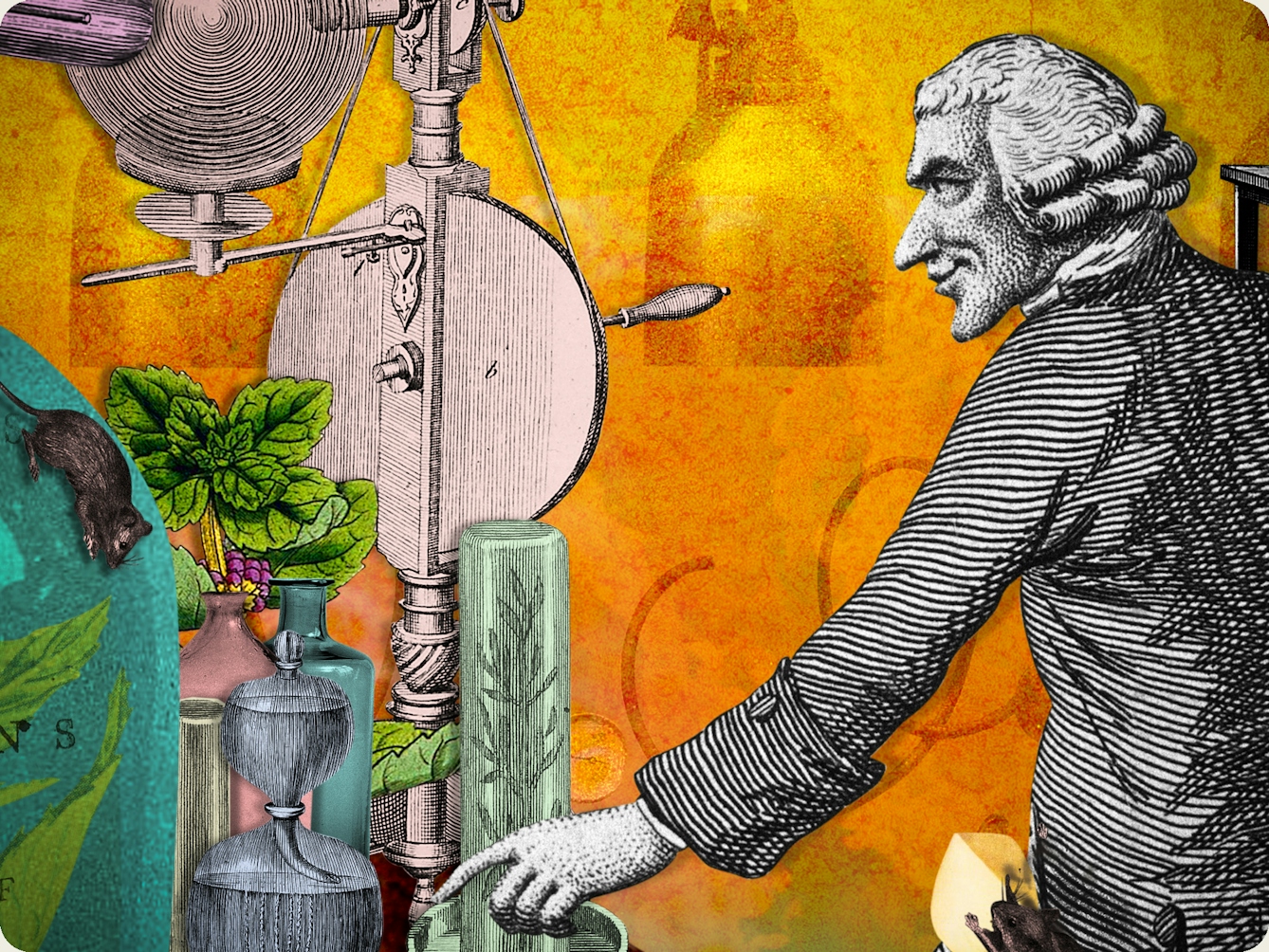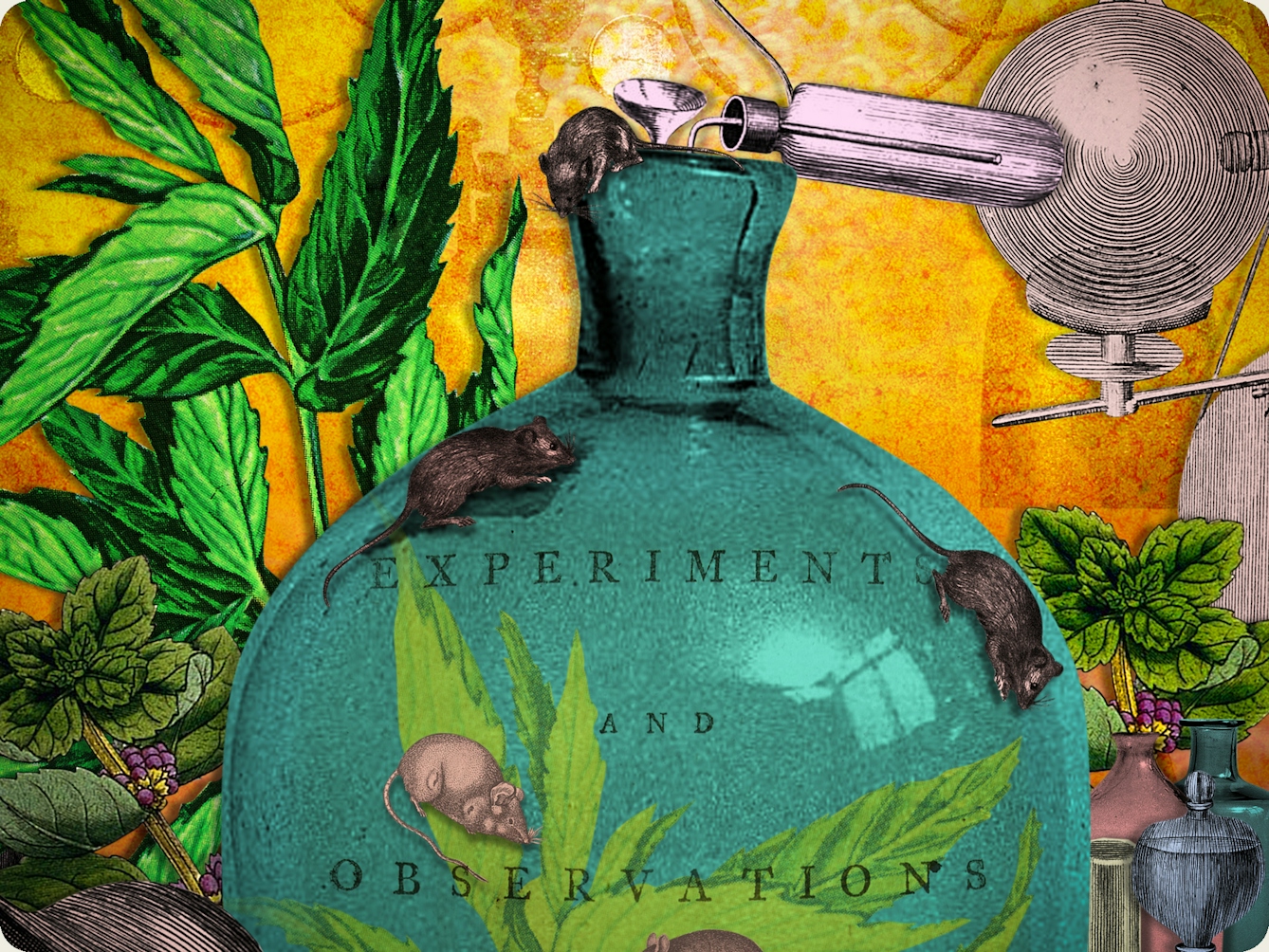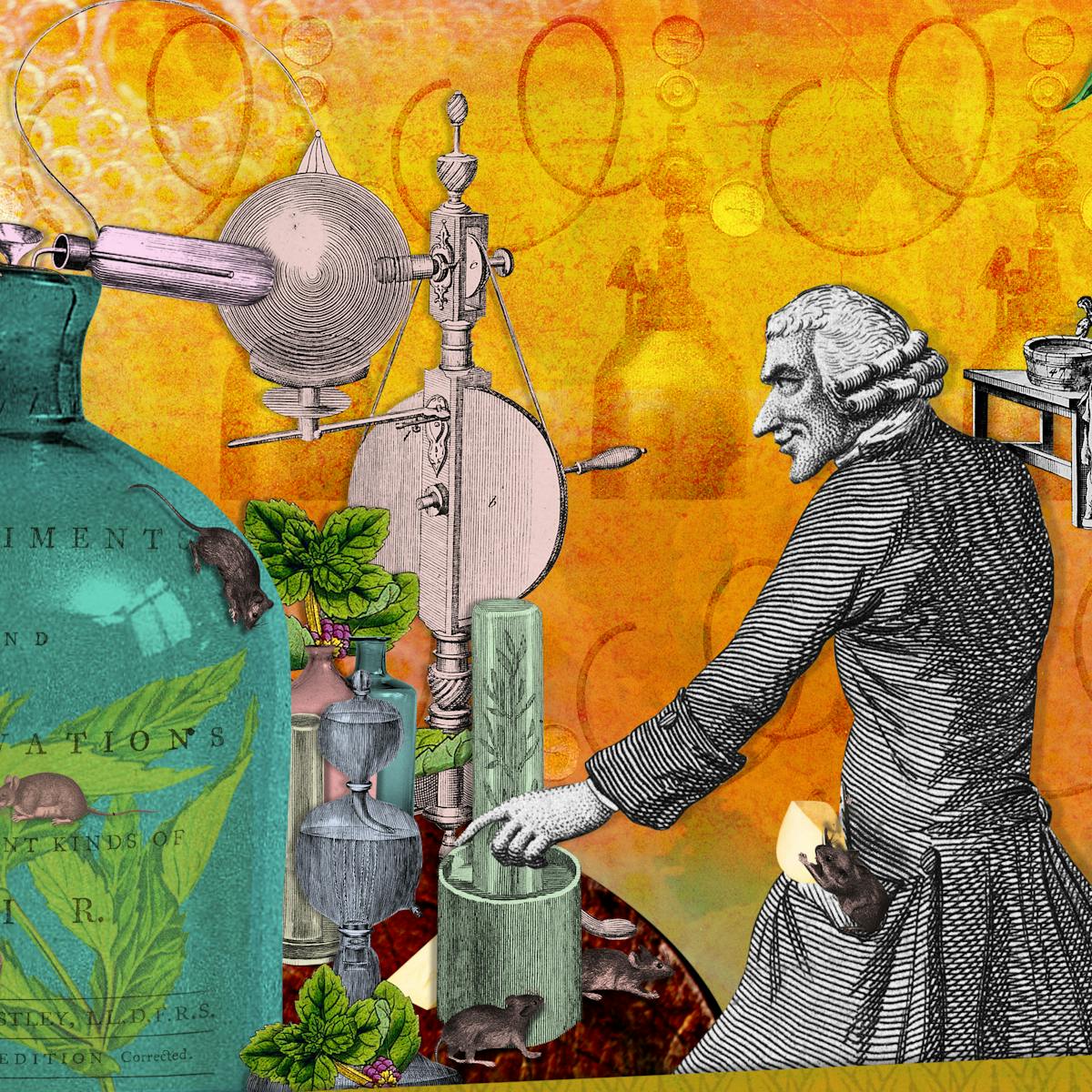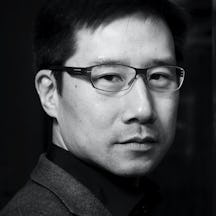The bubbles emitted by fermenting beer intrigued 18th-century preacher and chemist Joseph Priestley. Historian Hasok Chang explores Priestley’s subsequent investigations – which led to his discovery that air is composed of a mix of gases – and celebrates his lasting legacy.
When he was perhaps four or five years old, my nephew once asked me, “Uncle, what is air?” We were on a family holiday on an island, and I think he got puzzled when the grown-ups kept saying how good the air was there.
I was taken aback for a minute, and then I got the idea of grabbing a plastic bag lying around in the kitchen, enclosing some air in it, and letting him squeeze the bag to feel the air inside as something real and tangible. As with many other familiar things in life, air is quite mysterious when you think about it.
It was not until the late 18th century that scientists began to investigate the nature of air seriously. For centuries the word ‘air’ just designated anything gaseous. The first big step forward was to recognise that there were different types of gases (or ‘airs’) and that atmospheric air was a mixture of very different types of gases – mostly nitrogen and oxygen, but other ones, too.
By far the most prolific contributor to the new field of “pneumatic chemistry” was Joseph Priestley, Nonconformist minister and self-taught chemist who lived, preached and taught in various English provinces.
Bubbles of refreshment
Priestley’s research on airs began not with oxygen and nitrogen, but with “fixed air”, which we now call carbon dioxide. While he was the minister at Mill Hill Chapel in Leeds, he took an interest in the bubbles coming up in the fermenting vats at a neighbourhood brewery.

“By far the most prolific contributor to the new field of ‘pneumatic chemistry’ was Joseph Priestley, Nonconformist minister and self-taught chemist.”
He collected this gas and studied its properties, and discovered that he could dissolve quite a lot of it in water and make a refreshing sparkling beverage. This invention made him famous all over Europe, and put him on a path of investigating the physical and chemical properties of different airs, and discovering many new gases in the process.
We might learn at school that Antoine-Laurent Lavoisier discovered oxygen, which he also named. Actually, Priestley made oxygen and told Lavoisier about it, and also discovered that it supported combustion much better than ordinary air. But Priestley called the new gas “dephlogisticated air”, because he had made it by trying to remove ‘phlogiston’ from atmospheric air.
He believed that phlogiston was a substance released when things burned, or metals rusted, and expected dephlogisticated air to support combustion well, since it would be eager to regain the phlogiston that it had lost.
The luxury of oxygen
Priestley realised that our breathing was a process akin to combustion, only much slower. Animals spoiled air by releasing phlogiston into it, and died if they were left long enough to breathe in an enclosed space, as he learned by experimenting on some mice that he had caught in his kitchen.
Not wishing to continue killing more mice, he learned to hold on to their tails during the experiment so that he could whisk them out before they died.

“While Priestley was the minister at Mill Hill Chapel in Leeds, he took an interest in the bubbles coming up in the fermenting vats at a neighbourhood brewery.”
Crucially, Priestley discovered that the mice lived much longer if the space was filled with oxygen rather than ordinary air. And then he plucked up the courage to breathe the gas himself, and reported that his lungs felt wonderfully light, and speculated that this novel air might one day become an item of luxury.
Priestley did not make any medical use of oxygen, but others did. Thomas Beddoes in Bristol attempted to apply cutting-edge chemistry to medicine at his Pneumatic Institution, where Humphry Davy began his scientific career. It is hard to imagine medical care today without tanks of oxygen and patients breathing from masks.
Of mice and mint
What delighted Priestley even more was discovering that plants had an ability to restore the goodness of air spoiled by animal respiration. In other words, he had stumbled upon photosynthesis.
Mice lived longer in an enclosed space if a small mint plant was placed in the space. Without plants, we animals would use up the oxygen in the atmosphere and all suffocate to death.
Priestley marvelled at God’s providence that allowed the harmonious sustenance of life on earth. The carbon dioxide emitted by animals makes a key nutrient for plants. Plants use solar energy to make carbohydrates from carbon dioxide and water, and emit oxygen as a by-product. Animals eat the carbohydrates, combine them with oxygen to extract energy, and emit carbon dioxide as a by-product.

“What delighted Priestley was discovering that mice lived longer in an enclosed space if a small mint plant mint was placed in the space.”
This wonderful cycle of carbon and oxygen is the very foundation of the Earth’s ecology, which Priestley understood in terms of the phlogiston theory.
Reform, rejection and revolution
Theology and science were not separate for Priestley: the harmonious order of nature that he had discovered was part of God’s design. The mission of the natural philosopher was never-ceasing enquiry into inexhaustible, Divine nature.
This may give the impression that he was a conservative thinker. On the contrary, he was a reformer through and through – in religion, in education, and in politics. His open advocacy of American independence and the French Revolution earned him many enemies in England, and in the end, he fled to the United States after his house and lab were ransacked by a ‘Church and King’ mob in Birmingham in 1791.
Meanwhile, the phlogiston theory, too, came to be widely rejected, and the exiled Priestley died as an isolated defender of phlogiston.
However, Priestley left us a lasting legacy, namely the realisation that the air we breathe is a mixture of different gases, and that in our breathing and eating we are part of an awe-inspiring interconnected natural cycle. It delights me to think that such momentous discoveries came from a humble and sincere preacher watching beer bubbles and sniffing gases with mice!
About the contributors
Hasok Chang
Hasok Chang is the Hans Rausing Professor of History and Philosophy of Science at the University of Cambridge. He is the author of ‘Inventing Temperature’ (2004) and ‘Is Water H2O?’ (2012), and co-editor (with Catherine Jackson) of ‘An Element of Controversy: The Life of Chlorine in Science, Medicine, Technology and War’ (2007).
Tracy Satchwill
Tracy Satchwill was born in London, grew up in South Wales and is now based in Norfolk. Working across film, collage, photography and installation, her art practice explores female power, reflecting on its removal or reclamation. She weaves personal narratives into her work, exploring identity, oppression and vulnerability to combine the feminine with the surreal, the uncanny and the weird. Satchwill has exhibited at galleries and institutions across the UK and internationally. She also works on public commissions and residencies, focusing on women’s experiences.


